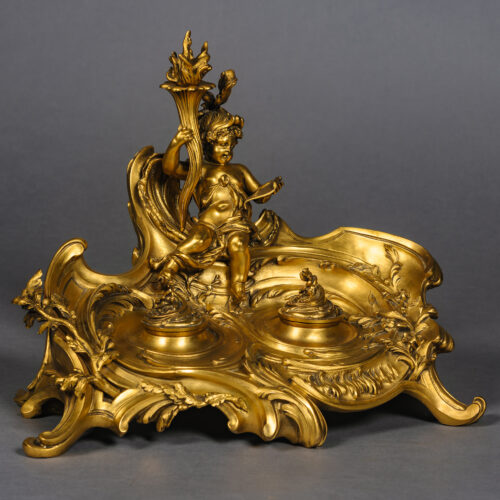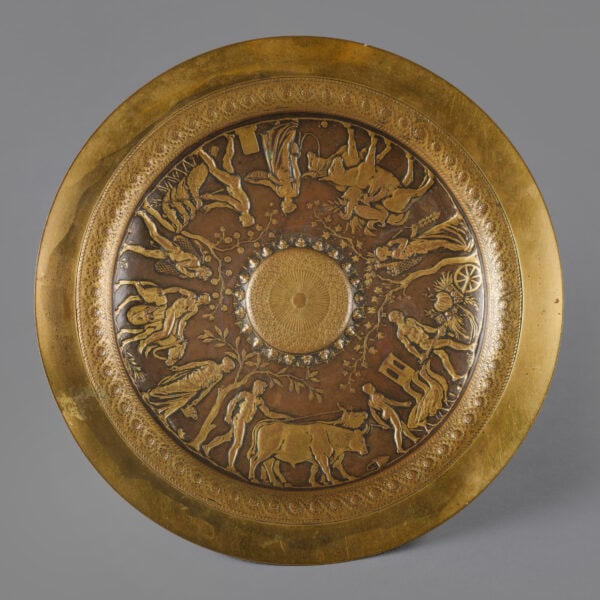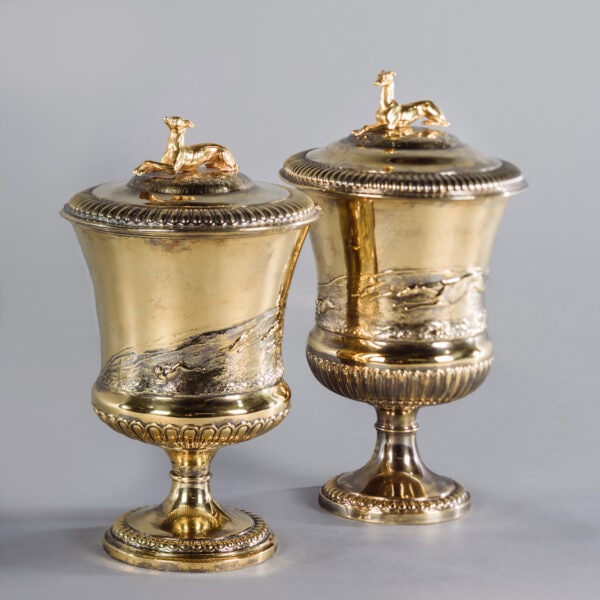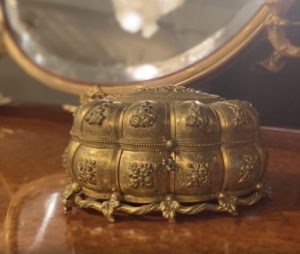Atelier de Benedetto Boschetti
Modèle en marbre du Rosso Antico de la Tombe des Scipions
£30,000
A Large Rosso Antico Marble Model of the Sarcophagus from the Tomb of the Scipios. Attributed To The Workshop Of Benedetto Boschetti. The lid with palm-scrolled...
Dimensions
Height: 23 cm (10 in)Width: 47 cm (19 in)
Depth: 19 cm (8 in)
Description
A Large Rosso Antico Marble Model of the Sarcophagus from the Tomb of the Scipios. Attributed To The Workshop Of Benedetto Boschetti.
The lid with palm-scrolled ends, is inscribed to the front edge CORNELIVS. CN. F. SCIPIO.
The main body is embellished with a Roman Doric entablature and is inscribed with Barbatus’ epitaph, written in Old Latin Saturnian meter:
CORNELIVS·LVCIVS·SCIPIO·BARBATVS·GNAIVOD·PATRE PROGNATVS·FORTIS·VIR·SAPIENSQVE—QVOIVS·FORMA·VIRTVTEI·PARISVMA FVIT—CONSOL CENSOR·AIDILIS·QVEI·FVIT·APVD·VOS—TAVRASIA·CISAVNA SAMNIO·CEPIT—SVBIGIT·OMNE·LOVCANA·OPSIDESQVE·ABDOVCIT
“Cornelius Lucius Scipio Barbatus, sprung from Gnaeus his father, a man strong and wise, whose appearance was most in keeping with his virtue, who was consul, censor and aedile among you – He captured Taurasia, Cisauna, Samnium – he subdued all Lucania and led off hostages.”
The sarcophagus of Lucius Cornelius Scipio Barbatus, celebrated conqueror of the Etruscans in 298 BC, was discovered in 1780 during the excavation of the sepulcher of the Scipione family on the Via Appia Antica, and later transported by Pius VI to Rome’s Pio-Clementino Museum.
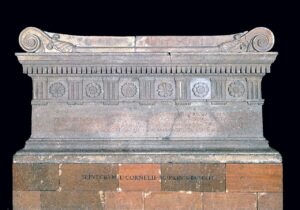
The granite sarcophagus of Scipione Barbato dating to 280-270 B.C. © Vatican Museum (MV.1191.0.0)
The bones of Scipio Barbatus, along with a gold signet ring taken from his finger bone, were removed from the sepulcher in the excavations of 1780 and initially went to the Vatican along with everything else of value in the tomb. Pope Pius VI gifted the bones to a Venetian Senator, Angelo Quirini, who re-interred them in an elaborate sepulcher in the gardens of his villa near Padua. The gardens were later destroyed, and the fate of the bones is unknown. The gold ring was gifted by Pius IV to a French scholar, Louis Dutens, who later sold it to the Earl of Beverley. By the late 19th century it had found its way into the collection of the Dukes of Northumberland at Alnwick Castle. The classicist Mary Beard confirmed in 2015 that it was still in the collection, which makes it the only ancient Roman ring which can be traced to an original owner.
Italy, Circa 1840/60.
Date
Circa 1840/60
Origine
Italy
Moyen
Marbre
The workshop of Benedetto Boschetti (1820-1870) was renowned for the exceptional quality of its marble work ‘after the antique’. From his premises at 74 via Condotti in Rome, Boschetti supplied extremely high quality works of art to satisfy the academic and sophisticated tastes of young Englishmen on the Grand Tour.
His work was widely praised and he was awarded a medal at the Great Exhibition of 1851 in London. The most celebrated examples of his work today are a mosaic table depicting the Triumph of Cupid in the Gilbert Collection, London, and the fine reductions of the Warwick Vase, in rosso antico now in the Toledo Museum, Ohio.
Bibliographie :
Gonzalez-Palacios, Alvar, ‘Il tiempo del gusto’, Longanesi (Milan), 1986.
Meyer, Jonathan, ‘Great Exhibitions: London, New York, Paris, Philadelphia, 1851-1900’, Antique Collector’s Club (Woodbridge, UK), 2006; p.41
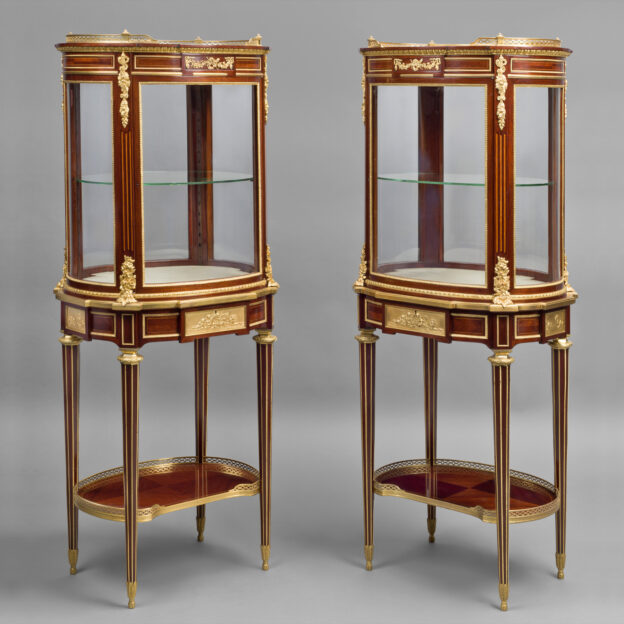




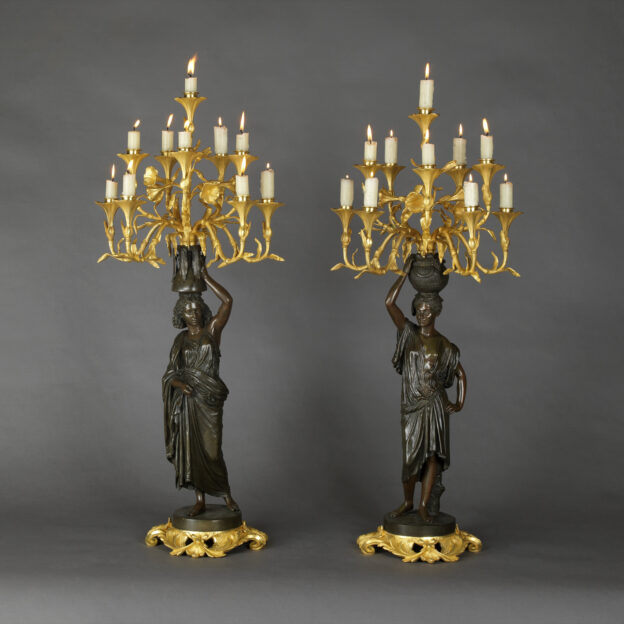
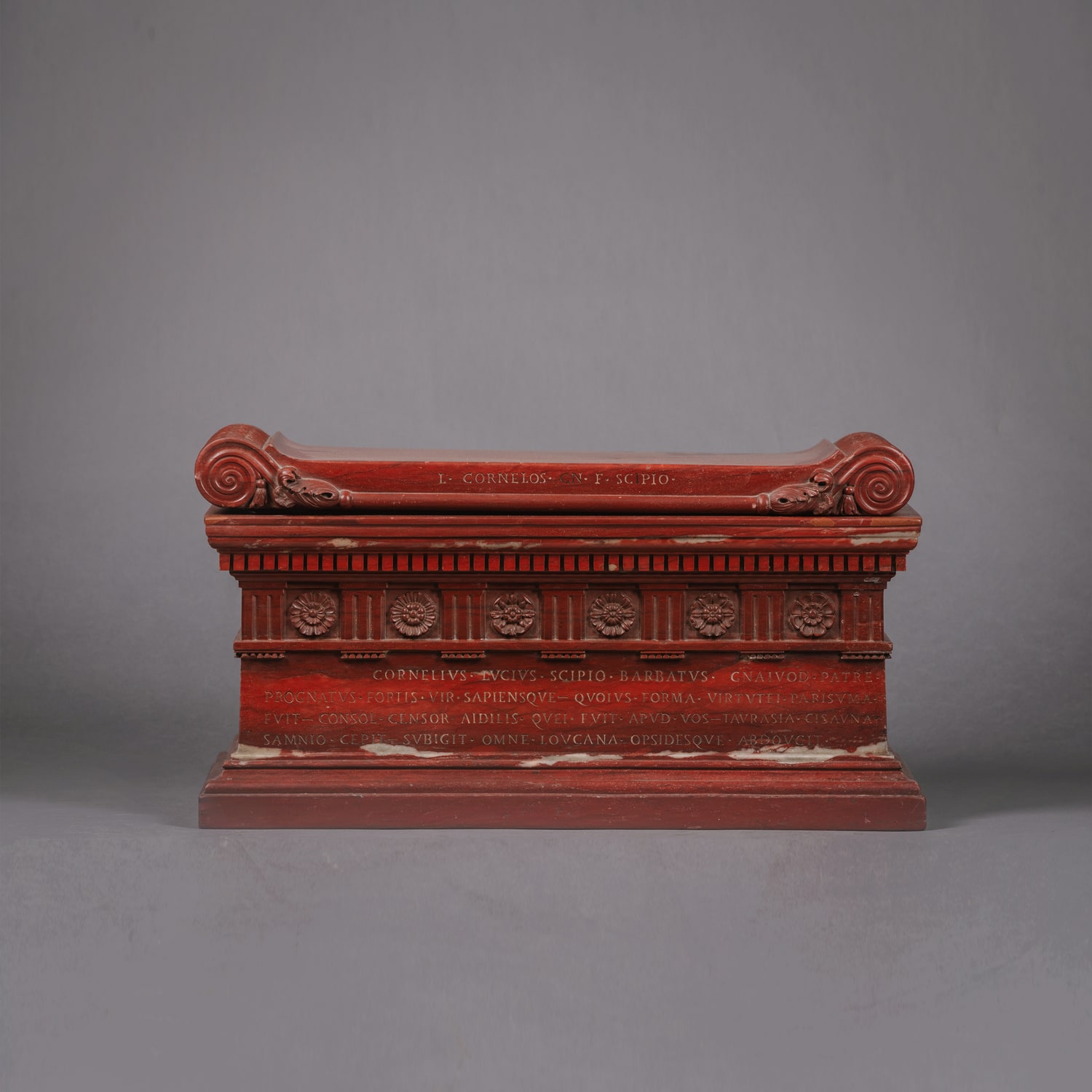

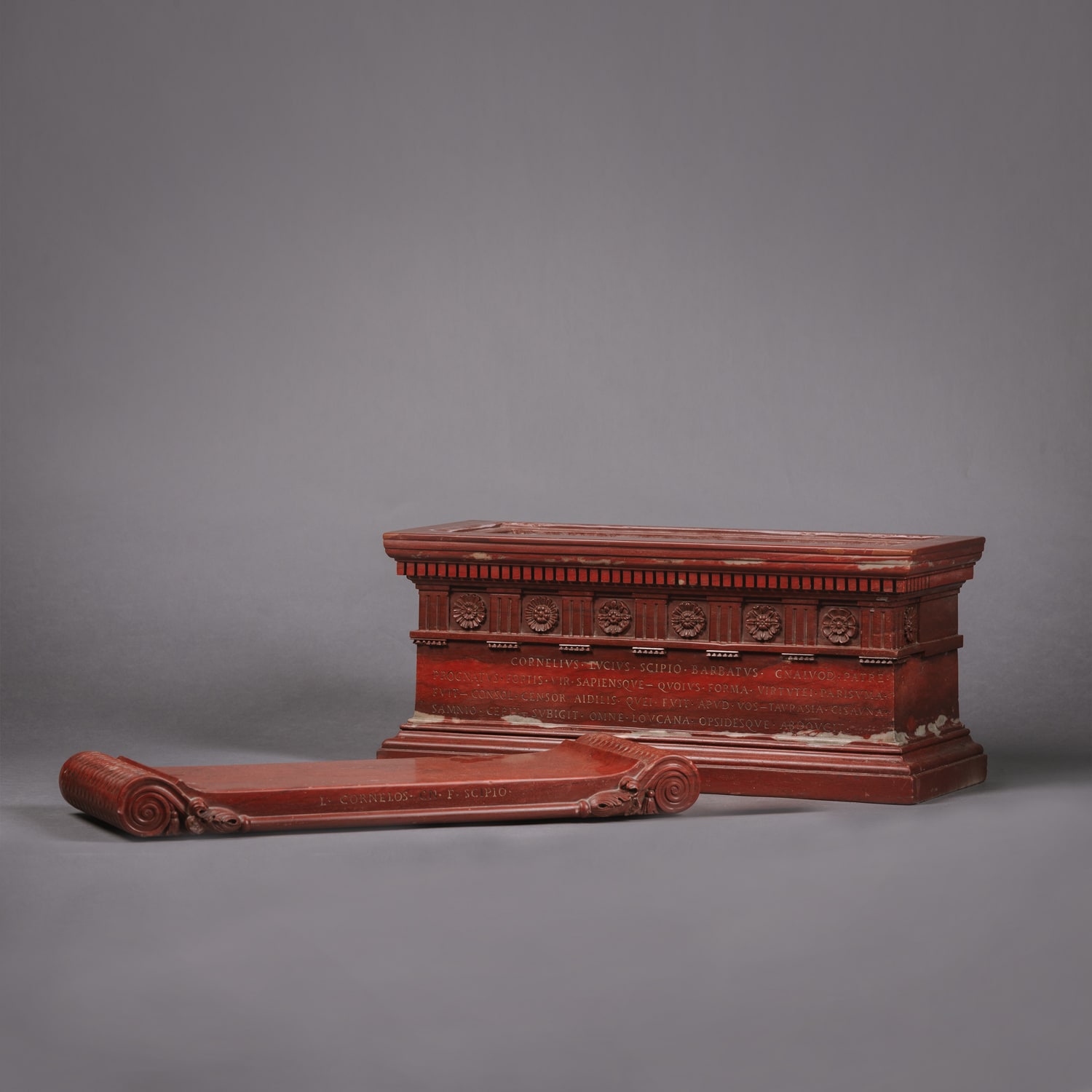

 Imprimer
Imprimer